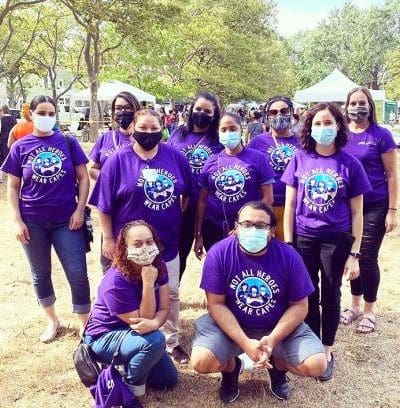Search Posts
Recent Posts
- Cranston Councilor Germain’s resignation charges get swift response, call for investigation April 18, 2024
- We Cook! Mill’s Tavern Short Rib Sage Polenta April 18, 2024
- Rhode Island Weather for April 18, 2024 – John Donnelly April 18, 2024
- Providence: A new culture in City Hall – Mayor Smiley’s FY25 Budget April 18, 2024
- RI Veterans: Did you know? 18.04.24 (100th bday, events, Q/A, fishing, resources) – John A. Cianci April 18, 2024
Categories
Subscribe!
Thanks for subscribing! Please check your email for further instructions.

Community Health Centers at the front lines of fighting COVID-10
by Richard Asinof, ConvergenceRI.com, contributing writer on health
On Thursday, Nov. 12, three members of the Providence Community Health Centers team will receive the 2020 Meritorious Service Award from the R.I. Public Health Association at the organization’s annual meeting, to be held virtually.
The recipients are: Dr. Andrew Saal, MD, MPH, chief medical officer, and his colleagues, Chelsea DePaula, MPH, director of Community Health Advocates program, and Daniel McGuire, Director of Population Health, at the Providence Community Health Centers [PCHC], who are being recognized for their outstanding response during the early COVID-19 outbreak.
Here is a series of questions and answers with the award-winners in an interview with ConvergenceRI, talking about their work. Three things to note: the three recipients have not been inside the same room together for months; clean population data is crucial to guide good public policy, reflective of McGuire’s role; and the recognition that data can guide community-level interventions, which are the focus of DePaula and her team of community health advocates.
ConvergenceRI: How has COVID changed the way that PCHC has emphasized cultural competency in the delivery of health care services?
PCHC: The COVID-19 virus continues to take advantage of every weak link in our social fabric – from inadequate housing, to food insecurity, to crowded working conditions. The virus doesn’t care about your race or ethnicity. It’s an equal opportunity SOB.
Yet it disproportionately impacts communities of color and families of low income because they are the ones least likely to have adequate resources to socially distance or work from home. This pandemic has been driven by the social determinants of health and has magnified the health disparities across our society.
Providence Community Health Centers has been serving the neighborhoods of Providence for more than 50 years. Like the rest of the world, 2020 has forced us to examine our core beliefs of community and health.
We thought we were doing a fairly good job; but the question is: Is that good enough? Reducing health care disparities takes more than just improving access. We must address the structural barriers and systems that create roadblocks for entire neighborhoods and generations of children.
Promoting cultural competency is a start – but we need to go beyond that and greet our neighbors with a degree of cultural humility. As educators and healers, we need to understand each person’s health beliefs in order to empower them to care for themselves.
There are no monolithic Black or Latinx populations – the diversity within each community is as broad as the diversity across each community. At the Providence Community Health Centers, we recognize and celebrate the uniqueness of each neighborhood that we serve. No matter where you call home – Olneyville, Elmwood, South Providence, Washington Park, Smith Hill, Lippitt Hill, or anywhere else in the world – you are welcome here.
ConvergenceRI: What lessons have been learned from the development of telehealth in response to the coronavirus pandemic?
PCHC: COVID-19 required health care systems to make five years’ worth of changes in a matter of weeks. We’re grateful to our IT team who completely redesigned how we deliver care in a rapidly evolving situation.
At the same time, both health care workers and patients have needed to invest a lot of time in learning to use these new telemedicine tools –and it can be challenging and frustrating when things don’t go as planned.
The pandemic has highlighted the importance of patients having good Internet access and a device with a good camera; it’s much easier to counsel patients on a wound when we can see it clearly, but many of our patients don’t have the tools to support that. Lack of broadband creates a digital divide between affluent and poor and will lead to worsening health care disparities if not addressed.
Our telemedicine emphasis has been to get all the members of the care team, including clinicians, medical assistants, case managers, and behavioral health staff online so that patients can continue to see the staff who have treated them for years. We’ve embedded translation services directly into our telemedicine system, allowing patients to get prompt care even if a staff member is not available to translate.
We’ve also stepped up our outreach to patients via text messages and phone calls to provide education and support in an environment where patients may not feel comfortable reaching out for help.
Surveys indicate that many of our patients prefer telehealth visits, particularly for behavioral health, because it’s convenient and safe.
ConvergenceRI: Given the recent up tick in community spread of the virus in Rhode Island, is there enough testing being done? What recommendations are you giving to your patients?
PCHC: The art of communicating health information has been as eye-opening as it has been challenging. We’ve been messaging our staff, those patients with traditional face-to-face visits, as well as those in the community who may never set foot in one of our facilities.
One size doesn’t fit all, and our public health messages have been crafted to address a wide range of literacy levels and in several languages – including Spanish, Portuguese, French Creole, and Khmer.
The messages themselves aim to empower people. “The vaccine may be months away – but here’s what you can do right now to help protect yourself and your family.”
We’re asking families to follow the latest guidance from the R.I. Department of Health on social gatherings and wearing masks and to quarantine in home when requested by a health official.
We’re asking patients with medical risk factors, such as cancer, diabetes, obesity, heart, or lung problems, to be particularly careful. We’re also asking patients to call us if they feel ill or have concerns. There’s a lot we can do with telemedicine – allowing us to keep patients, our staff, and the community safe.
Accessible and timely testing is the foundation of our public health strategy. PCR-based tests are extraordinarily accurate but can take days to get results. Point of care rapid tests are beginning to come onto the market but can have variable sensitivity and can miss some genuinely positive cases.
Our largest problems with widespread testing, however, may be the actual clinical facilities themselves. We’ve enhanced our air handlers and cleaning schedules to make the clinics as safe as possible. But some of these facilities are in their fifth decade. When they were built, the infectious disease to worry about was tuberculosis. Each facility has one or more negative pressure rooms in a central location. But COVID-19 is far more contagious than TB.
The riddle of rapid testing is how to move that potentially contagious patient with a fever to the safe room in order to obtain the test – without passing through a waiting room or exposing other patients and staff.
For now, we are continuing to use outdoor-based testing while we re-design the entrances to some of our buildings.
ConvergenceRI: Do community health centers need to be given more resources to serve the populations they serve?
PCHC: As many have noted, the problem is rarely as simple as just allocating more resources. What could a community health center do with a million dollars? A lot. But what could we do with a diverse workforce of community health workers to bridge the efforts of dozens of agencies and grass-roots projects? Quite a bit more.
By working with our community partners and neighbors, we hope to improve the health of every member in our community – even if they have never set foot inside one of our clinics.
While there may generally be enough resources to help level the playing field for everyone, they are often not distributed equitably throughout our communities. People are beginning to realize the how lack of access to housing, food, medicine and transportation can impact an entire community’s health. The social determinants of health have been described as “the causes of the causes.”
Addressing them effectively and in a sustainable fashion will require the coordinated efforts of grassroots organizations, health care systems, policy makers, and government agencies.
ConvergenceRI: What kind of coordination has been practiced with Health Equity Zones in outreach to community members?
PCHC: The Health Equity Zones (HEZ) are invaluable forums to improve health outcomes for both high-risk individuals as well as entire neighborhoods. From their inception more than 50 years ago, community health centers have recognized that one cannot address health care disparities in a sustainable fashion unless they empower a community to take care of itself. The foundation of that effort begins with economic opportunities, adequate housing, and access to healthy foods at the neighborhood level.
The HEZs create a venue for PCHC to coordinate its work with other clinical, social or housing partners including: the R.I. Department of Health, Providence Housing Authority, ONE Neighborhood Builders, YMCA, CCAP, Project Weber/Renew, Refugee Dream Center, Family Services of Rhode Island, Federal Hill House, and many others.
Each community agency brings its special skills to the table. PCHC provides comprehensive and coordinated medical care for individuals identified by our partner agencies – and relies on our partner agencies to handle those issues that they are far better equipped to handle such as housing and food.
By coordinating our expertise and resources with our community allies, we are able to achieve a far greater impact for everyone in the community.

Richard Asinof is the founder and editor of ConvergenceRI, an online subscription newsletter offering news and analysis at the convergence of health, science, technology and innovation in Rhode Island.
